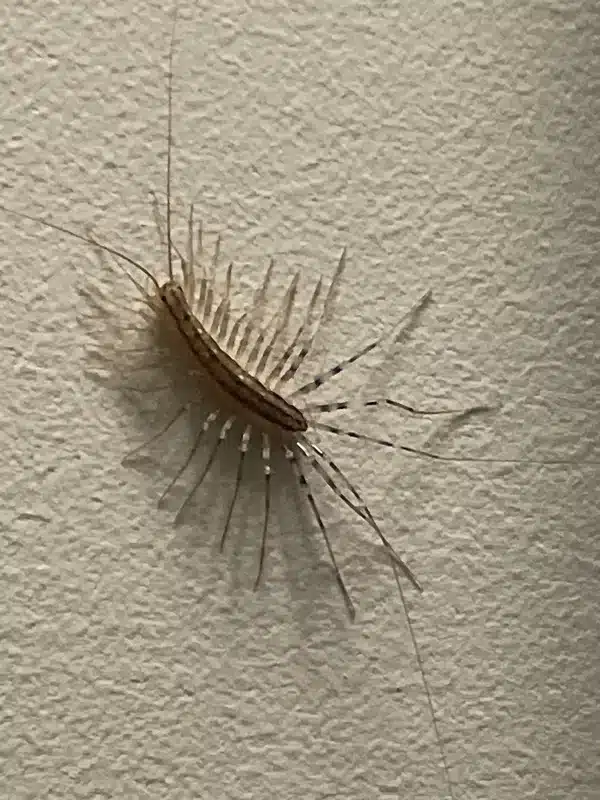When you spot a fast-moving pest darting across your basement floor or bathroom, it can be hard to tell if you’re dealing with a house centipede or silverfish. These common household pests look different and behave differently, but many homeowners struggle to tell them apart. Understanding the key differences between house centipedes and silverfish helps you identify what you’re seeing and choose the right approach for your home.
Both pests prefer damp environments and often show up in similar areas of your home. However, one is actually beneficial while the other can cause damage to your belongings. In my four years as a registered technician, I’ve helped countless homeowners identify these pests and develop effective treatment plans.
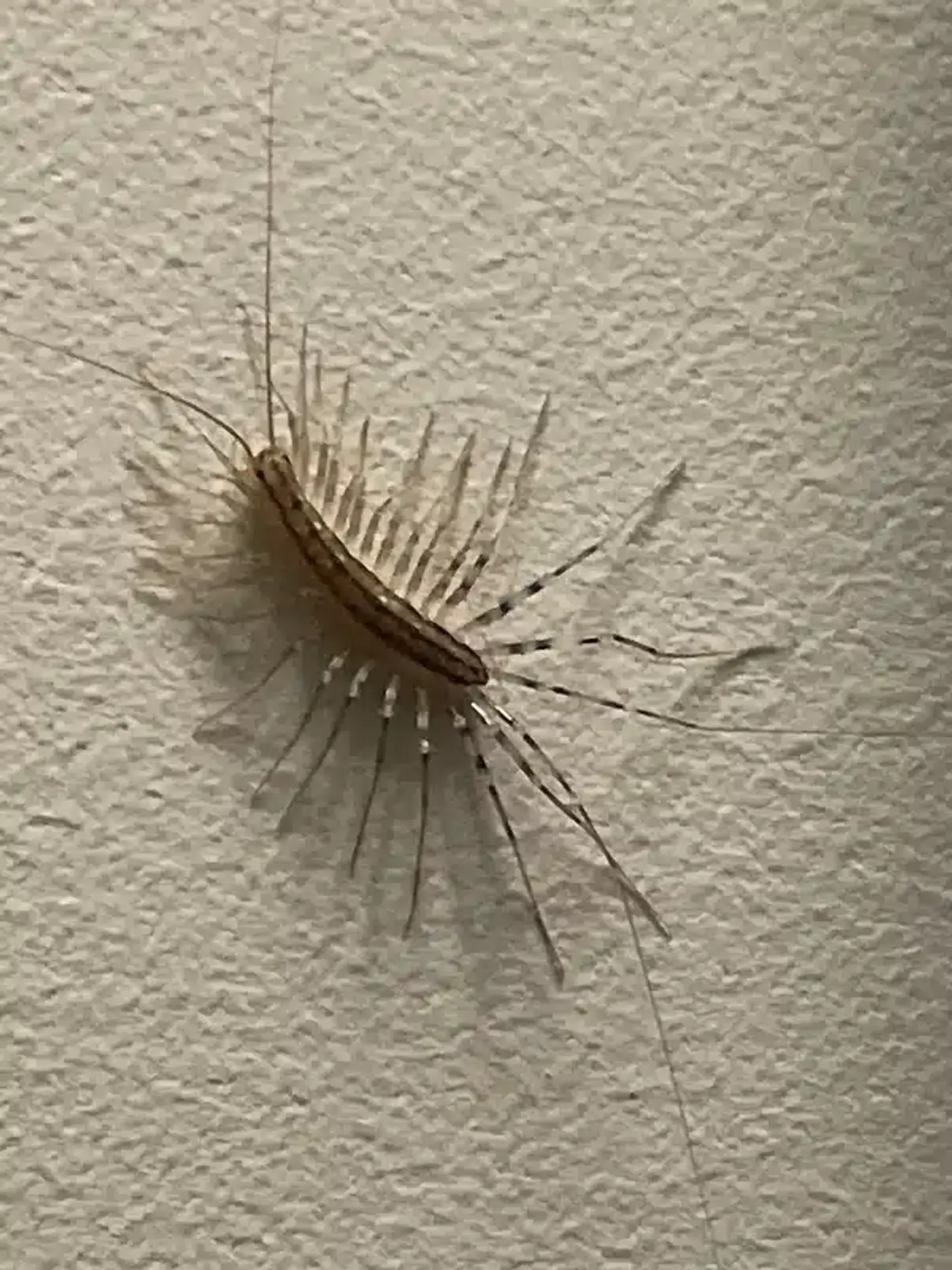
What’s the Difference Between House Centipedes and Silverfish
The differences between house centipedes and silverfish are dramatic when you know what to look for. House centipedes have long, thin bodies with 15 pairs of legs that get longer toward the back. Their legs can span up to four inches, making them look like a moving starburst when they run.
Silverfish have a completely different appearance. They’re shaped like tiny fish with silvery scales covering their bodies. They measure about half an inch to three-quarters of an inch long and have three bristle-like tails. Unlike house centipedes, silverfish are much smaller and don’t have the dramatic leg span.

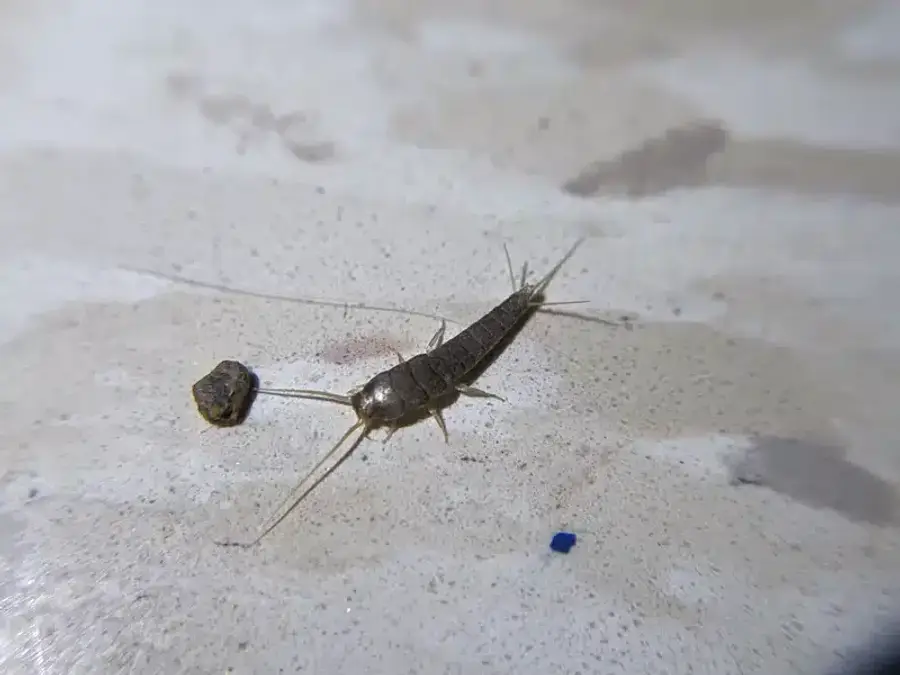
House Centipede vs Silverfish Comparison
| House Centipede | Silverfish | |
|---|---|---|
| Size | 1+ inch body, 4 inch leg span | 0.5-0.75 inch total |
| Legs | 15 pairs, long & visible | 6 legs, small & hidden |
| Movement | Fast straight-line sprint | Wiggling side to side |
| Diet | Other insects (carnivore) | Paper, fabric, starch |
| Impact | Beneficial pest control | Property damage risk |
Size and Movement: How These Pests Behave
House centipedes are larger and built for speed. They can sprint up to 16 inches per second, which explains why you might see a blur racing across your basement floor. According to Penn State Extension, these creatures are exceptional runners that can even climb walls and ceilings.
What does the science say?
Penn State Extension research confirms that house centipedes can reach speeds of up to 16 inches per second, making them one of the fastest household arthropods. Their unique leg structure, with each pair being longer than the previous, allows them to achieve this remarkable speed while maintaining stability on walls and ceilings.
Silverfish are smaller but also quick. They move in a distinctive wiggling pattern from side to side, almost like they’re swimming through the air. When disturbed, they dart for cover, but their movement is different from the straight-line sprint of a house centipede.
The size difference is significant. House centipedes can reach over an inch long in body length, with their leg span making them appear much larger. Silverfish are smaller, typically measuring less than an inch long including their tails.
Predator vs Pest: Understanding Their Role in Your Home
Here’s where these two creatures differ dramatically in their impact on your home. House centipedes are carnivorous predators that hunt other insects. They actually eat silverfish, along with cockroaches, spiders, and other small insects that invade your home.
This means centipedes can bite if handled, but they’re generally beneficial. Centipedes can bite if handled roughly, but the bite might cause mild irritation similar to a bee sting. Most of the time, centipedes don’t bother people and focus on hunting their prey.
Why House Centipedes Are Actually Helpful
- Natural Pest Control: They hunt cockroaches, silverfish, spiders, and other household pests
- No Property Damage: Unlike silverfish, they don’t eat your belongings or cause structural harm
- Indicator Species: Their presence often means you have other pest issues they’re helping to control
- Minimal Human Contact: They’re nocturnal and avoid people, focusing on hunting other insects
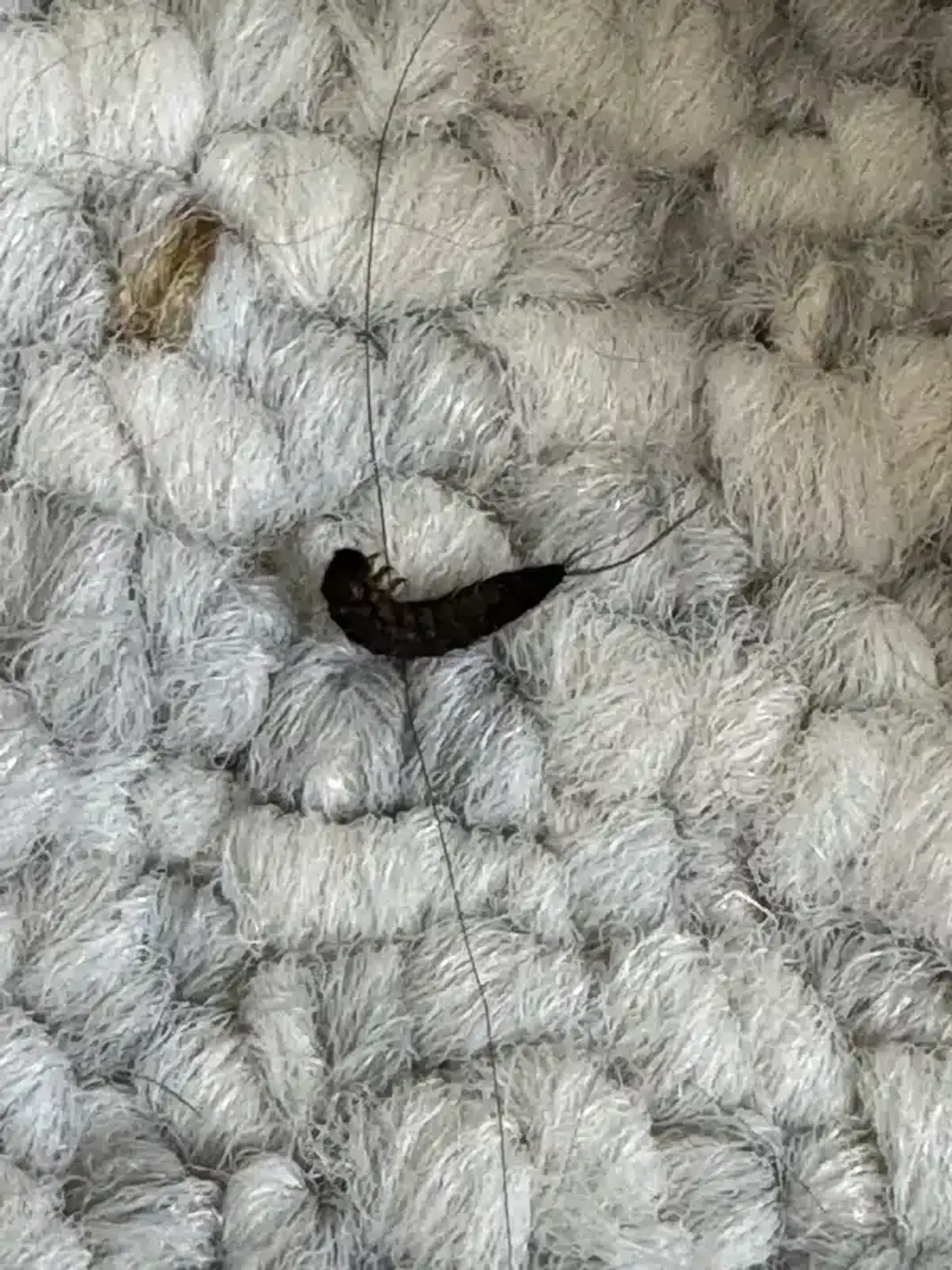
Silverfish, on the other hand, are true household pests. Silverfish feed on starchy materials like paper, wallpaper glue, book bindings, and fabrics. They can damage important documents, photographs, and clothing over time. Silverfish don’t bite or spread diseases, but they can cause expensive damage to your belongings.
In our family business serving the DMV area for over 50 years, we’ve seen significant silverfish damage in libraries, closets, and storage areas. Unlike house centipedes, silverfish create real problems for homeowners by eating their way through valuable items.
Habitat and What Attracts Each Pest
Both house centipedes and silverfish love moisture, which is why you’ll find them in similar areas of your home. However, what attracts each pest differs significantly.
Where House Centipedes Live
House centipedes follow their prey and seek damp environments. You’ll typically find them in:
- Basement areas with high humidity
- Crawl spaces with moisture issues
- Bathroom areas near plumbing
- Areas where other insects are present
Centipedes may enter your home seasonally from outdoor hiding spots under rocks, mulch, or leaf litter. They’re drawn indoors by the presence of other insects and moisture.
Where Silverfish Thrive
Silverfish are attracted to both moisture and their food sources. Common locations include:
- Areas with stored papers or books
- Closet areas with natural fabrics
- Bathroom spaces with poor ventilation
- Rooms where wallpaper or starchy materials are present
Silverfish can be found thriving in humidity levels between 70-95%, which explains why they’re common problems in areas like Bowie and Waldorf, where high humidity creates perfect conditions for these pests.
House Centipede vs Silverfish: Damage Potential and Pest Control Benefits
The approach to pest management differs greatly between these two insects because of their different impacts on your home.
House Centipedes: Natural Pest Controllers
House centipedes prey on many common household pests, providing natural biological control. They hunt cockroaches, silverfish, carpet beetle larvae, and even spiders. According to Missouri Department of Conservation, they can actually reduce overall pest pressure in your home.
What does the science say?
The Missouri Department of Conservation documents that house centipedes serve as valuable biological control agents, consuming numerous pest species including cockroaches, silverfish, flies, moths, and other arthropods. Their presence often indicates a balanced ecosystem where natural predation helps maintain pest populations at manageable levels.
Many pest control experts recommend tolerating a few house centipedes because they indicate that other pest problems exist. If you’re seeing many house centipedes, it usually means they have plenty to eat - which suggests you might have other insect issues to address.
Silverfish: Property Damage Concerns
Silverfish can damage valuable items throughout your home. They feed on starchy materials including:
- Book bindings and paper documents
- Photographs and artwork
- Natural fabrics and clothing
- Wallpaper and adhesives
Silverfish in your home can cause significant economic losses, especially in areas where important documents or heirloom items are stored. I’ve seen cases where silverfish infestations destroyed family photographs and important paperwork.

How to Prevent House Centipedes and Silverfish: Treatment Strategies
Effective pest management for these insects requires different approaches based on their behavior and the problems they cause.
Managing House Centipedes
Because house centipedes can bite but are generally beneficial, management focuses on addressing underlying issues:
- Control their food source by treating for other insects like silverfish in bathrooms and other areas
- Reduce moisture through dehumidifiers and improved ventilation
- Seal entry points around foundations and pipes
- Remove hiding spots like stored cardboard and debris
Professional pest control services can help identify and treat the underlying pest problems that attract house centipedes to your home.
Controlling Silverfish
Silverfish control requires a more direct approach because of their damage potential:
- Reduce humidity levels below 50% throughout your home
- Store important papers and fabrics in sealed containers
- Eliminate moisture sources that attract these pests
- Apply targeted treatments to areas where silverfish are active
Silverfish also respond well to dietary elimination - removing their food sources makes your home less attractive to these destructive pests.
When Moisture Issues Signal Bigger Problems
Both centipede and silverfish infestations often indicate moisture problems that can lead to other issues. High humidity that attracts these pests can also:
- Create conditions for mold growth
- Attract other moisture-loving pests
- Cause structural damage over time
- Reduce indoor air quality
Silverfish and house centipedes may be the first sign that your home has humidity issues that need attention. Addressing moisture problems helps prevent house centipedes and silverfish while also protecting your home from more serious damage.
Our registered technicians often find that homes in areas like South Riding and Potomac have specific moisture challenges due to local soil conditions and climate factors that create ideal conditions for these pests.
Professional Pest Control vs DIY: Managing House Centipedes and Silverfish
Understanding these differences between house centipedes and silverfish helps determine whether you need professional intervention or can handle the problem yourself.
When to Call for Professional Help
Professional pest control becomes necessary when:
- You’re seeing multiple silverfish regularly, indicating an active infestation
- House centipedes are present in large numbers, suggesting significant prey insect problems
- Moisture issues are beyond simple fixes
- Damage to valuables has already occurred
Our approach focuses on identifying and treating the root causes rather than just addressing symptoms. Pest control experts can develop comprehensive plans that address both immediate pest issues and long-term prevention.
DIY Prevention Methods
Homeowners can take several steps to keep your home less attractive to both pests:
- Run dehumidifiers in damp areas like basements
- Improve ventilation in bathrooms and crawl spaces
- Store susceptible items in sealed containers
- Address plumbing leaks promptly
- Practice sealing entry points around your home’s foundation
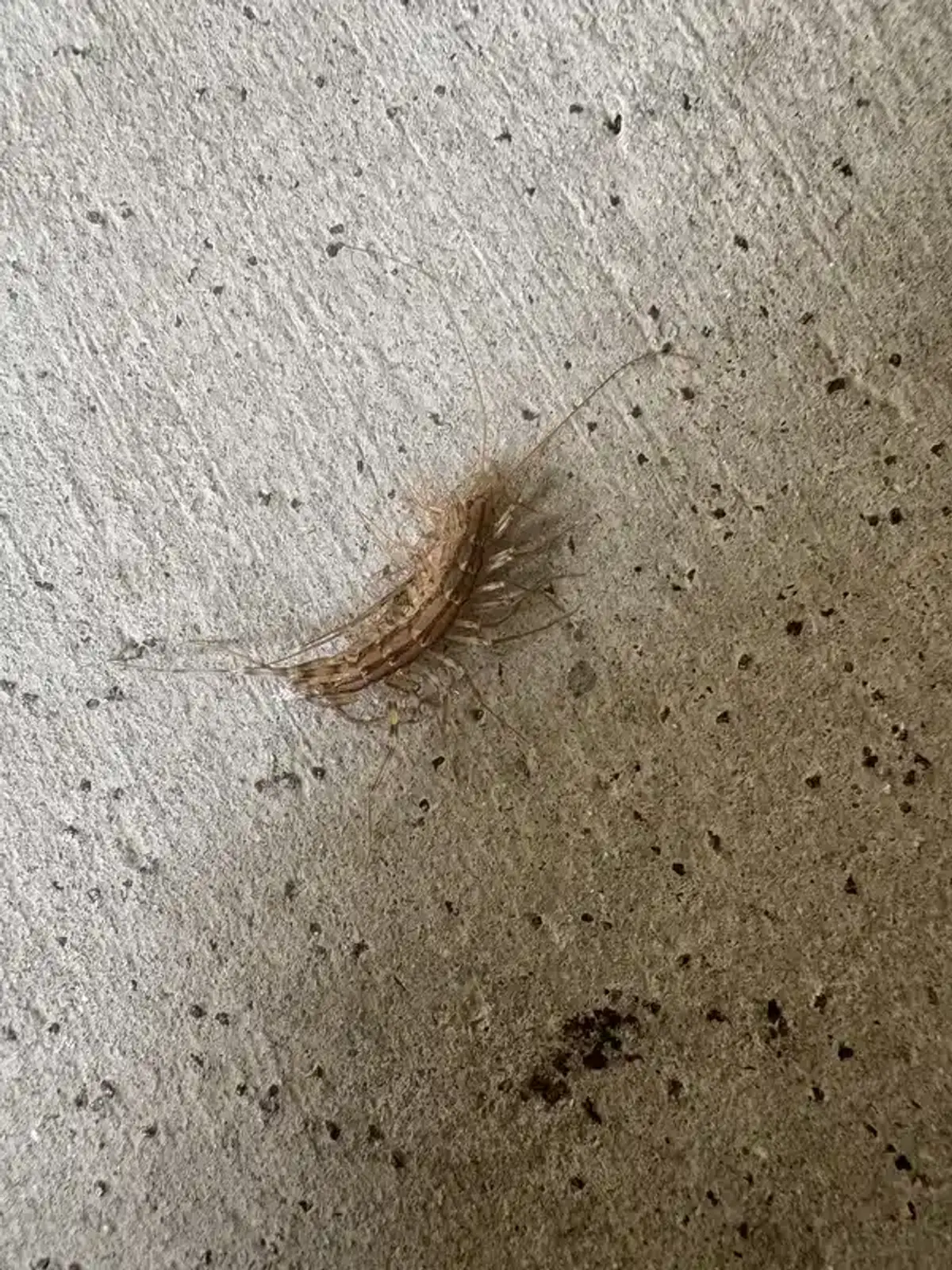
Making the Right Choice for Your Home
Whether you’re dealing with a house centipede or silverfish, the key is understanding what each pest means for your home. House centipedes might look scary, but they’re actually working to control other pest problems. Silverfish, while less dramatic in appearance, pose real threats to your belongings.
The similarities and differences between these pests matter when developing an effective management strategy. Both indicate moisture issues that need attention, but silverfish require more aggressive treatment due to their destructive nature.
Our family business has helped homeowners throughout the DMV area develop effective strategies for dealing with both pests. Whether you need help identifying what you’re seeing or developing a comprehensive treatment plan, professional pest control services can provide the expertise needed to protect your home.
If you’re unsure whether you’re dealing with house centipedes, silverfish, or other household pests, don’t wait for the problem to get worse. Early identification and treatment prevent costly damage and give you peace of mind. Call us at 703-683-2000 or email info@bettertermite.com for expert identification and effective treatment options tailored to your specific situation.
Frequently Asked Questions
Do house centipedes kill silverfish?
+
Yes, centipedes hunt silverfish as part of their natural diet. House centipedes are predators that actively seek out and eat silverfish, along with other small insects like cockroaches and spiders. This predator-prey relationship means that having some house centipedes can actually help control silverfish populations naturally.
Is it bad to find a house centipede?
+
Finding a house centipede isn't necessarily bad - it often indicates that you have other insects for them to eat. While they can look scary with their many legs, house centipedes are generally beneficial pest controllers. However, seeing many centipedes suggests you might have underlying pest or moisture issues that need attention.
Why shouldn't you kill silverfish?
+
Actually, you should control silverfish because they can damage valuable items in your home. Silverfish feed on paper, fabrics, and other household materials, potentially causing expensive damage to books, documents, and clothing. Unlike beneficial insects, silverfish are true pests that need management to prevent property damage.
Should I kill house centipedes?
+
Generally, you don't need to kill house centipedes since they help control other pest problems. However, if their presence bothers you or if you're seeing large numbers, it's better to address the underlying conditions that attract them. Focus on reducing moisture and treating for the insects they're hunting rather than killing the centipedes directly.
Do both silverfish and house centipedes indicate moisture problems?
+
Yes, both pests like silverfish and house centipedes thrive in humid environments. Finding either pest often signals that your home has moisture issues that need attention. Addressing humidity problems through better ventilation, dehumidifiers, and fixing leaks helps control both types of pests naturally.
Can house centipedes and silverfish both be found in the same areas?
+
Yes, you might find both in areas like basements, bathrooms, and other damp locations. However, if house centipedes are actively hunting in an area, silverfish populations may be reduced since centipedes are carnivorous predators that eat silverfish as part of their natural diet.
How can I tell if I have a silverfish infestation vs occasional centipedes?
+
A silverfish infestation typically involves finding multiple silverfish regularly, seeing damage to papers or fabrics, and discovering their silver scales around affected areas. Occasional centipedes usually indicate they're hunting for prey. If you're seeing both pests frequently, you likely have a moisture problem that's supporting multiple pest species.
What's the best long-term strategy for preventing both pests?
+
The most effective long-term strategy focuses on moisture control and exclusion. Keep humidity levels below 50%, fix any plumbing leaks, improve ventilation in problem areas, and seal entry points around your foundation. Pest management programs that address seasonal pest activity can also help maintain long-term control of both centipedes and silverfish.
With five years of hands-on experience in the pest control industry, George Schulz is a registered technician with the Virginia Pest Management Association and a proud third-generation professional in a family business that's been protecting homes for over 57 years. He manages and trains a team of service pros while also leading internal research efforts—recently spearheading a deep-dive review of thousands of documents on pest control materials to hand-pick the most kid and pet friendly, most effective solutions tailored specifically for homes in the DC metro area.
